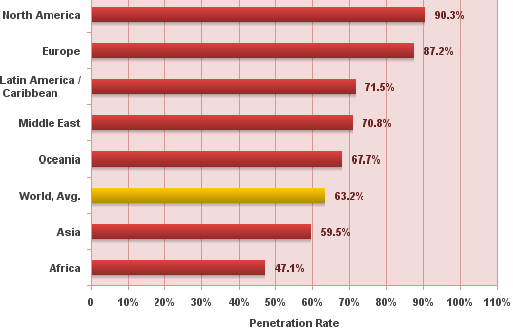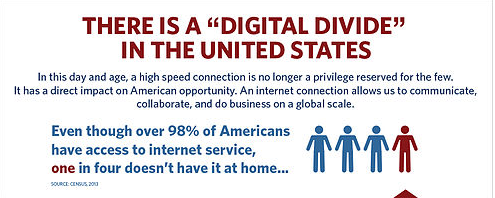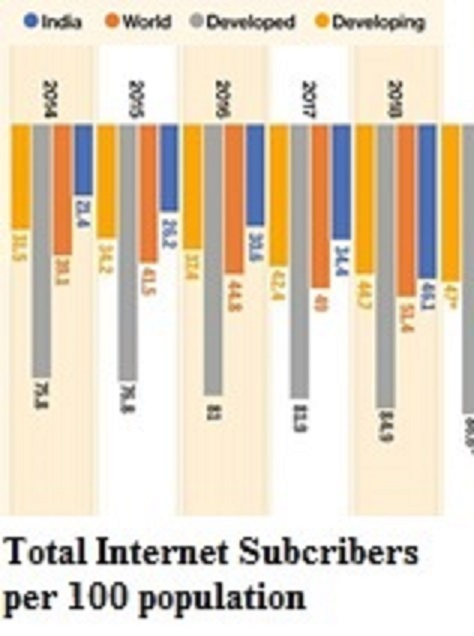Digitalization is one of the key parameter in the advancement of a country in the era of internet. But in the process of digitalization, one major concern is in the division of digital access to the population which is called “digital divide”. Besides the devastating effect of Covid- 19 pandemic on the economy, it has equally crippled the delivery process of education and especially to the have-not layer students of the society. And in this context, the impact of digital divide is more displayed in the development of an equitable society. The contraction on the economy due to the pandemic will now enhance further the digital divide as it is already making more gap between rich and poor (1), and therefore it is much more worrying than earlier. The reality is now exposed. At the same time, it has opened up for a fresh opportunity to rejuvenate the strategy of reducing the digital divide.
Digital divide refers to the gap between people having satisfactory access to gadget (e.g., PC, Laptop, Tablet, Smart Mobile phone etc.), medium of connection as internet with data connected to the gadget and those who have limited access or no access at all for both gadget and internet connection. And this division is automatically built up primarily due to the economic, educational and infrastructural gaps, though other factors like age, gender, ethnicity, disability, LGBT etc. compounds to the cause (2). Let’s have a look at the latest rate of penetration of internet in different geographies (3).
Internet Penetration Rates by Geographic Regions @ 2020 Q3

https://www.internetworldstats.com/stats.htm
(Penetration rates are based on a world population of 7,796,615,710 and 4,929,926,187 estimated internet users in October 27, 2020 (Copyright@2020 Miniwatts Marketing Group)
The above chart shows that the highest internet penetration is in North America and Lowest in Africa. Even in the USA, about 25% of the population are victim of digital divide to date.

So if this is the digital divide scenario in geography where internet penetration is highest, then it can be easily assumed the scenario in other geographies. A common denominator of this digital divide also exists in the divide between the urban and rural area for all geographies; internet penetration is more in the urban area.
In the pandemic time when the operation of a physical classroom in the education sector was not possible, students from a financially stable family and living in urban areas have managed to continue their education by digital mode. But students of low-income family or living in the rural areas remain deprived of their teaching-learning process. Therefore, Pandemic Covid- 19 has further widened the digital gap and this will have huge detrimental implication in future in the division of rich-poor in the society. To mitigate this gap, rejuvenated efforts are necessary: (1) to improve the access of broadband internet, (2) availability of device like PC, Laptop, Tablet or at least a smartphone to the students’ community and (3) and affordable price of data to lower-income population.
According to my Indian experience, the key parameter of accessing digital services to a lower-income group of the population is source of cheap data because expenditure of data is recurring. Purchasing of a smartphone is a one-time expenditure and it is becoming more affordable to the lower-income group as gradually the prices of smartphones is coming down. Once data is cheap, demand goes up and internet service provider invest in expanding broadband services. As an example, the global average is $5.09 for 1GB of data but in India where the cheapest data is available in the world is $0.09 (3). And because of this, digital penetration of 54.3 % has been achieved by India, which is 70 basis points higher than the estimated global ratio of 53.6 % at the end of 2019 (4).

Therefore, in conclusion, affordability of data is the key to reduce the digital divide as well as social divide. Additionally, governments across the globe must start a new ministry dedicated to improving the infrastructure of digitization with a separate budget and target to achieve the complete digitization of academic institutions within 5 years. In the last 20 years, five times of outbreak of pandemic either globally or locally has occurred. So, as quickly as possible, the complete digitization of educational infrastructure will bring the competency to cope with any kind of outbreak or environmental disasters in future for an uninterrupted delivery of education.
References:
(1) Oxfam International press release 25th January 2021 (https://www.oxfam.org/en/press-releases/mega-rich-recoup-covid-losses-record-time-yet-billions-will-live-poverty-least)
(2) https://cs.stanford.edu/people/eroberts/cs181/projects/digital-divide/start.html
(3) Internet World Stats (https://www.internetworldstats.com/stats.htm)
(4) https://en.wikipedia.org/wiki/Digital_divide_in_the_United_States
(5) https://www.atlasandboots.com/remote-work/countries-with-the-cheapest-mobile-data-in-the-world-ranked/
(6) https://www.businesstoday.in/latest/trends/india-trumps-global-internet-subscription-figures-54-have-digital-access/story/409269.html
Dr. Susanta Pahari is a Professor of Biochemistry in Skyline University Nigeria. He has a PhD in Biochemistry from University of Calcutta, India.
You can join the conversation on Facebook @SkylineUniversityNG and on Twitter @SkylineUNigeria
